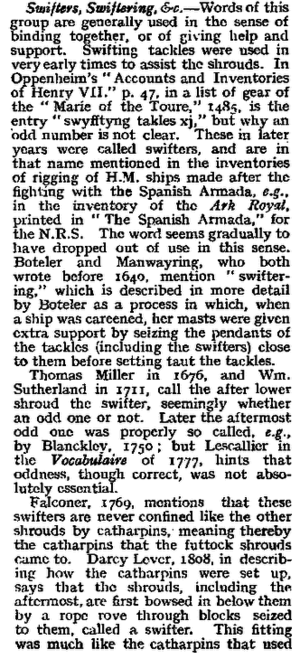- Joined
- May 27, 2019
- Messages
- 31
- Points
- 58

Can anyone help me please.
I am trying to find out exactly what swifters were back in early Tudor times. As far as I can make out these were a type of stay, fitted to the mast before the shrouds, which were tensioned using tackles rather than deadeyes. But I cannot find any illustration or description of their placement, or details of the tackle system used. I think they might have been the precursor to the backstays utilised towards the end of the 16th century but am not sure on this. Searches on the net so far throw no further light on this. Perhaps there is a rigging book or such that includes the subject but the problem here is that you have to buy the book to find out that it doesn't. Does anyone out there have some info or can point me in the right direction?
Many thanks
I am trying to find out exactly what swifters were back in early Tudor times. As far as I can make out these were a type of stay, fitted to the mast before the shrouds, which were tensioned using tackles rather than deadeyes. But I cannot find any illustration or description of their placement, or details of the tackle system used. I think they might have been the precursor to the backstays utilised towards the end of the 16th century but am not sure on this. Searches on the net so far throw no further light on this. Perhaps there is a rigging book or such that includes the subject but the problem here is that you have to buy the book to find out that it doesn't. Does anyone out there have some info or can point me in the right direction?
Many thanks


